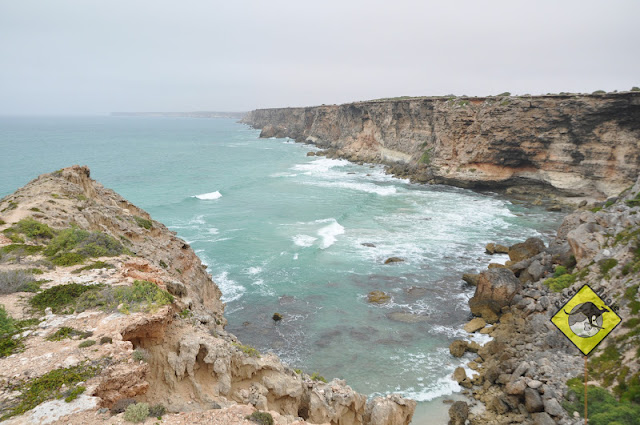About 50kms from Streaky Bay is the Baird Bay, small town with just few houses and a camp ground. It is famous for the 'Swim with Sealions and Dolphins' tour. Operated by the locals here. That's the purpose we are here!
Camp ground with compose toilet and bbq facility. Camp fee is honesty system too.
Sunset walk along the beach
Saw these two cute kangaroos (probably looking at the sunset) as we take a bush walk.
The Baird Bay Eco Ocean Experience departs twice daily to see the dolphins and sealions. These animals have settled in Baird Bay for quite some time so it is always easy to see them. Following the tour is easier, as they provide snorkelling equipments, wet suits, and shark protection. It's $140 per pax for the tour, lasts about 4 hours. It's better to make a booking before coming to Baird Bay as they may not have a tour in bad weather.
It's really once in a lifetime experience, swimming so closely with these cute sea animals. The dolphins are quite shy, though they came to see and swim a while but did not stay long. But the sealions are really playful, they will come close and even kiss you on the hand!
A: The water is freezing~~~
The tour offers some hot drinks and biscuits on the boat as well.
Dont miss this video - swim with sealion!!! but be patient cause it is a 4 mins video and it worth to see.
They are AMAZING and PLAYFUL!!
Bits of info about Australian Sea Lions and Bottlenose Dolphins
Sea lions: are the ‘eared seals’. They have tiny external ears and can lift their bodies off the ground with their four flippers. They are the fastest seals and can swim up to 40km/h.
Unlike other seals, their gestation is up to 18 months and not 12 months, as most others are. Females come ashore at breeding sites, mother usually returning to their place of birth to give birth themselves. Mature sea lions live on average for 20 years.
Dolphins: forehead is distinctly curved and houses the ‘melon’ that is used to emit sonar clicks into the water. They can swim up to 30km/h. Inshore dolphins will often work together to herd schooling fish and have been known to chase fish onto sandbanks and to beach themselves temporarily to catch them. In captivity dolphins can live as long as 40 years, in the wild they only live 25 to 30 years. Dolphins have a special sense called ‘echo location’ which is used for navigation and to find food. Echo locate on involves the production of sound in the naval sacs. The sound is focused by the ‘melon’ and then projected towards the object in the water. Sounds that strike any object are reflected back and received by the lower jaw, where they are passed to the brain. Dolphins can form sound pictures of objects based on the difference between the density of the object and the density of surrounding water. Their colour vision is limited, have no sense of smell, but have excellent sense of taste.




















































